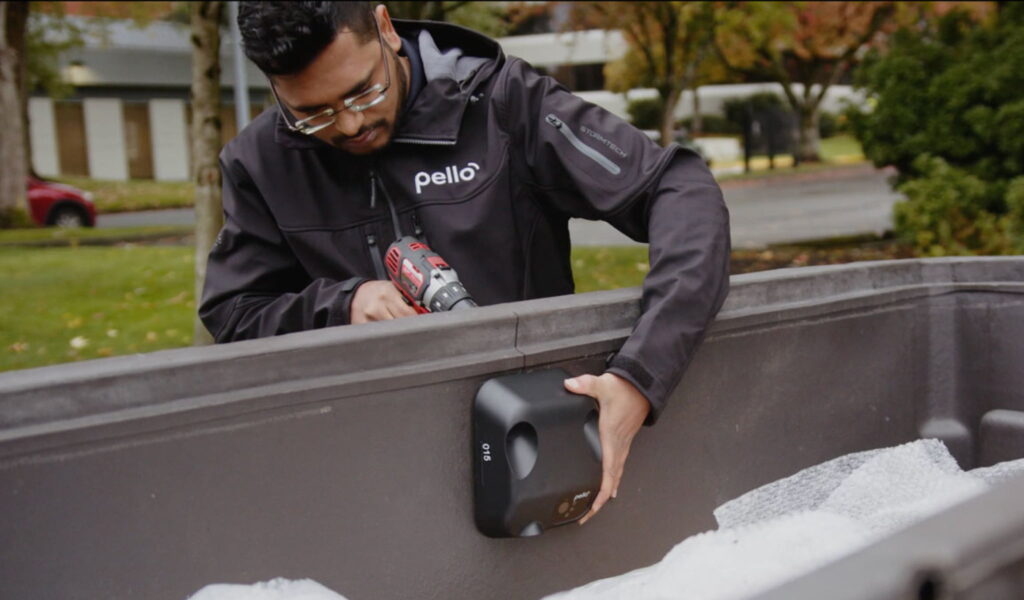Today, sustainability is more than just a catchphrase; it is essential to long-term corporate strategy.
Paul Hawken, a renowned environmentalist and founder of Project Drawdown, says, “Sustainability, ensuring the future of life on Earth, is an infinite game, the endless expression of generosity on behalf of all.”
In this remark, he emphasizes that it is through sustainability that we protect our planet. Sustainable, eco-friendly methods lower costs, increase stakeholder engagement, help you meet regulatory demands and improve brand loyalty. So, we have compiled a list of 10 strategies to help you increase your company’s sustainability.
Sustainability Mission and Planning
Establishing a sustainability mission gives your business’s green initiatives focus and accountability. Start by setting specific objectives, such as cutting energy use by a certain percentage over a set period or reaching waste-free status. Making your objective known demonstrates your dedication to environmentally friendly operations, including to stakeholders and staff.
Benefits:
We have seen Pello, our own fill-level sensing technology, help companies in their sustainability programs. The solution helps you plan ahead on trips to empty the bin with 95% accuracy. It helps eradicate waste overflow, contamination of the environment, and additional costs of cleaning the overflow.
The general perks include increased brand identity, consumer trust, and employee unity around shared, long-term environmental goals carried onward by a clear mission statement.
Employee and Community Engagement
When employees are included in your sustainability journey, they are empowered to be change agents. Organize seminars on environmentally friendly methods, promote involvement in recycling initiatives, or establish volunteer opportunities, such as neighborhood cleanups. Internal engagement can be increased by providing “green” bonuses or acknowledging sustainable behavior.
Benefit:
In our RTS and Suffolk University collaboration, the case study attests to immeasurable benefits through community engagement. First, all cardboards get consolidated and compacted, which reduces contamination with wet waste. Without contamination, recycling is achievable. There is also better reporting, transparency, and better route tracking of waste.
It’s also through collaboration of RTS and Chicago Pizzeria that e-waste in the region never finds its way to landfills. A win win.
Energy Efficiency and Green Technology
“….For one thing, being sustainable can help companies reduce costs. For example, by investing in renewable energy sources or using more efficient technologies, companies can save money on energy bills.” Richard Branson, the founder of the Virgin Group.
Green technology and energy-efficient system implementation lower operating expenses and carbon footprints, as Richard Branson clearly states. Upgrades include renewable energy sources like solar panels, programmable thermostats, and energy-efficient lighting.
Additionally, to control electricity use, think about implementing AI or smart technologies, which can identify trends and optimize energy use instantly.
Benefit:
Businesses that use green technology appeal to stakeholders and eco-conscious consumers alike by lowering energy costs, increasing efficiency, and complying with regulations.
Take, for instance, RTS and an 800-room luxury hotel. In this case study, the results were better waste removal efficiency. The green technology applied here also helped save time and promote proactive sustainability measures.
Green Office and Remote Work Practices
Establishing a green workplace can have a significant impact. Provide recycling bins for offices, promote transition to reusable materials, cut back on paper use, and replace single-use plastics. Providing flexible or hybrid work choices lowers your carbon footprint, encourages work-life balance, and cuts down on emissions from everyday commuting.
Salesforce promotes environmentally friendly practices both in the workplace and remotely. In its Sustainability At Home Guide, they provide a breakdown of energy efficiency at home for remote workers, including the use of renewable energy. This helps lower overall energy consumption.
Benefit:
Implementing green office practices lowers emissions, conserves resources, and communicates to staff that sustainability is a top priority for the company. When we worked with WeWork, a co-working space, there was a decrease in costs, the removal of e-waste, and more materials to be diverted from landfills.
Sustainable Products and Packaging
Reducing environmental impact requires a shift to sustainable products and packaging. This could entail removing extra packaging, providing recyclable options, or utilizing biodegradable materials. Collaborate with suppliers who are dedicated to sustainable practices to ensure that the materials and products you use support your environmental objectives.
Loop, a worldwide packaging project, collaborates with manufacturers on a five-core step guideline for its Plastic Smart Guide For Cities to show that sustainable packaging options are practical and efficient in cutting waste.
Benefit:
Reducing waste, appealing to eco-aware customers, and using sustainable packaging all help your brand stand out in a crowded market. This shows your commitment to environmental conservation to stakeholders supporting Environmental, Social, and Governance (ESG) objectives, something that we as a company are also committed to in our operations.
Sustainable Supply Chain and Procurement
Encouraging suppliers to reduce their environmental effects and procuring items responsibly are key components of a sustainable supply chain. Work with suppliers who value eco-friendly products and have low carbon emissions. Check the environmental compliance of your suppliers and choose those with sustainable certificates for businesses such as Fair Trade or ISO 14001.
Benefit:
The perks of a sustainable supply chain first minimize environmental impact. It also promotes fair labor practices and human rights where there is a precise balance between cost-effectiveness and sustainability. There is also a boost in transparency, traceability, innovation, and better risk management. Compliance with international laws is the final boon.
Waste Reduction and Recycling
At RTS, we believe comprehensive recycling systems and zero-waste services and initiatives are essential for a sustainable company. After evaluating waste output, prioritize areas for reduction, like plastic, paper, or electronics. Some businesses collaborate with recycling services to guarantee that recyclables are handled appropriately.
For instance, RTS’s Cycle Technology enables vending machines to make recycling more engaging by providing incentives for each recycled item. This makes recycling simple for both customers and staff. Thanks to this technology’s special capacity to gamify sustainability, recycling can become a fun activity.
Benefit:
Minimizing trash reduces your operations’ environmental impact, cuts disposal costs, and draws in eco-aware customers. We worked with a brewery, bar, and restaurant to ensure the effective recycling of about 180 tons of spent grain to generate renewable energy.
Gamification and Recycling Incentives
Sustainable innovation like gamification encourages involvement in green projects by offering incentives and rewards. One example is Cycle’s reverse vending technology, which encourages active engagement in sustainable activities by allowing consumers or staff to earn incentives like discounts or loyalty points for recycling.
Certain stores have improved customer engagement and recycling rates by incorporating reverse vending machines. You may demonstrate to clients your dedication to environmental stewardship and strengthen sustainability initiatives by implementing Cycle.
Benefit:
Through creative recycling incentives, gamification increases engagement, strengthens customer loyalty, and reinforces sustainable practices.
Water Conservation and Chemical Management
Sustainable operations are based on responsible chemical management and water reduction. Use eco-friendly cleaning products, encourage water conservation, and install water-efficient fixtures. Responsible chemical management keeps dangerous substances out of ecosystems, especially in sectors that utilize them.
Levi Strauss & Co.’s latest report lists the goal of water conservation: to reduce freshwater use in manufacturing by 50% by 2025.
Benefit:
Conserving water lowers utility costs, and managing chemicals responsibly protects ecosystems and complies with sustainability guidelines.
Environmental Certifications and Partnerships
Environmental certifications such as LEED, ISO 14001, and Energy Star attest to your sustainability initiatives and help you gain the trust of stakeholders and clients who care about the environment.
These certificates attest to your company’s adherence to strict environmental guidelines, which is becoming crucial for achieving ESG objectives and maintaining regulatory compliance.
You might consult the Library of Congress Green Business Guide for additional advice. Partnerships with environmental groups can also expand your business’s reach and reputation in the sustainability space.
Benefit:
Certifications and partnerships improve a brand’s image, attract environmentally conscious partners, and align business practices with global environmental goals. Stadiums across America, like the Alaska Airlines Field, receive accolades related to their LEED-certified buildings.
At the End of the Day
Adopting sustainability is now a strategic necessity that will influence businesses’ operations. Implementing eco-friendly processes is an investment in your brand’s success, resilience, and reputation.
Implementing sustainable practices will better equip your company to handle future environmental issues and regulatory demands, and RTS can help.
Ultimately, sustainability is a process rather than a goal unto itself. Every accomplishment, from trash reduction to ethical shopping, shows a dedication to environmental preservation and ongoing development.
Sources
Drawdown. (n.d.). Drawdown: The most comprehensive plan ever proposed to reverse global warming. https://drawdown.org/
RTS. (n.d.). Pello smart bin sensors. https://www.rts.com/pello-smart-bin-sensors/
RTS. (n.d.). Suffolk University case study. https://www.rts.com/about/case-studies/suffolk-university-case-study/
RTS. (n.d.). Giordano’s case study. https://www.rts.com/about/case-studies/giordanos-case-study/
RTS. (n.d.). Luxury hotel case study. https://www.rts.com/about/case-studies/luxury-hotel/
Salesforce. (2023). Sustainability at home. https://www.salesforce.com/content/dam/web/en_us/www/documents/white-papers/sustainability-at-home.pdf
RTS. (n.d.). WeWork case study. https://www.rts.com/about/case-studies/we-work/
Plastic Smart Cities. (n.d.). Plastic smart cities guides. https://plasticsmartcities.org/plastic-smart-cities-guides/
Library of Congress. (n.d.). Standards & certifications. https://guides.loc.gov/green-business/businesses-going-green/standards-%20certifications
Zero Waste. (n.d.). Services. https://www.zerowaste.com/services/
RTS. (n.d.). Cycle reverse vending machine. https://www.rts.com/cycle-reverse-vending-machine/#:~:text=RTS’%20Cycle%20experience%20gives%20fans,that%20supports%20the%20circular%20economy
RTS. (n.d.). Brewery case study. https://www.rts.com/about/case-studies/brewery/
Levi Strauss & Co. (2024). 2023 sustainability goals and metrics. https://www.levistrauss.com/wp-content/uploads/2024/10/2023-Sustainability-Goals-and-Metrics.pdf
RTS. (n.d.). What is LEED certification? https://www.rts.com/resources/guides/what-is-leed-certification/
Library of Congress. (n.d.). Green business. https://guides.loc.gov/green-business
RTS. (n.d.). LEED certified stadiums list. https://www.rts.com/resources/guides/leed-certified-stadiums-list/

